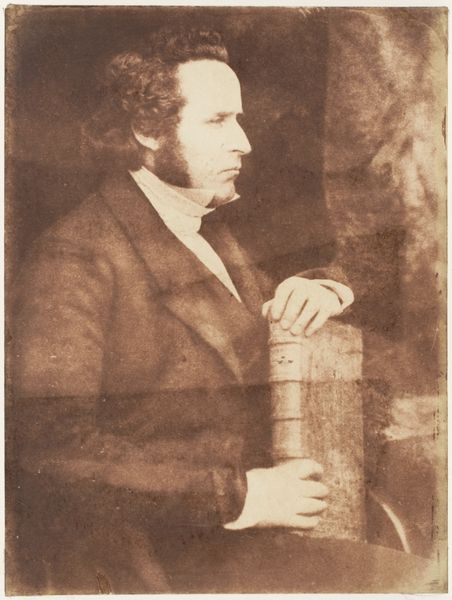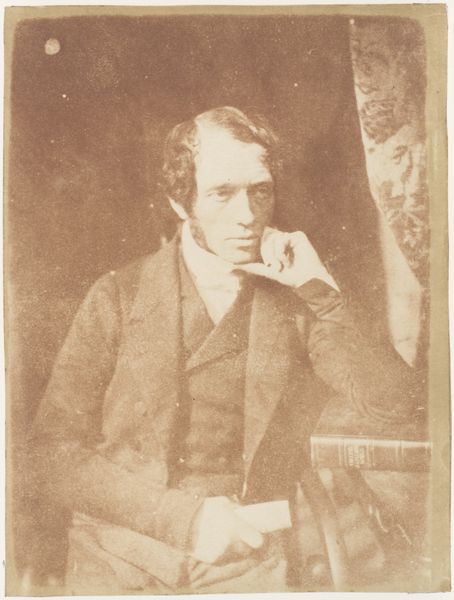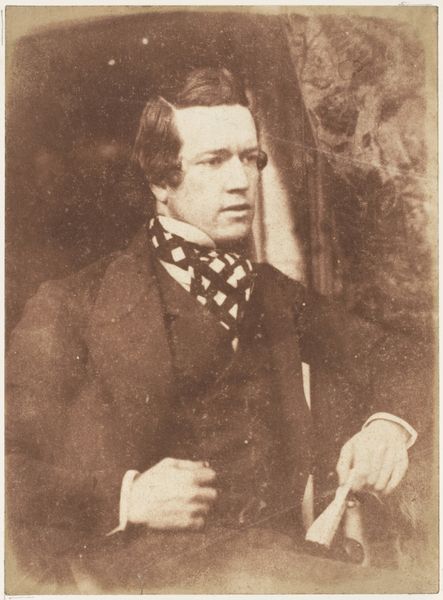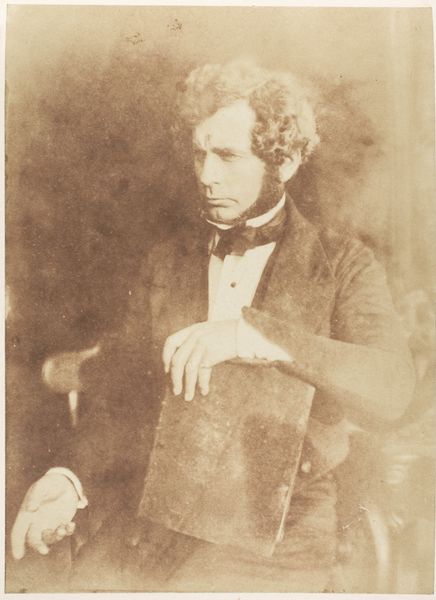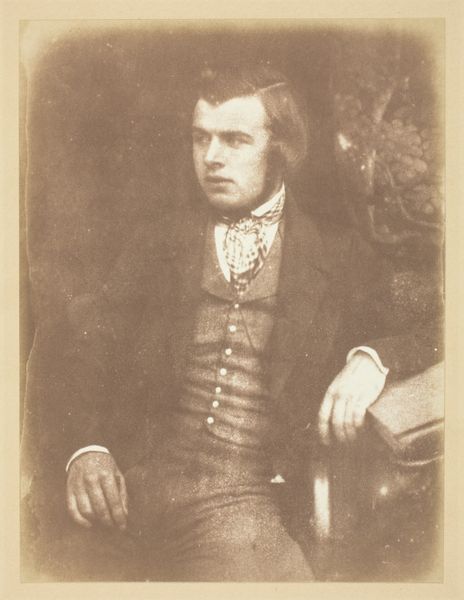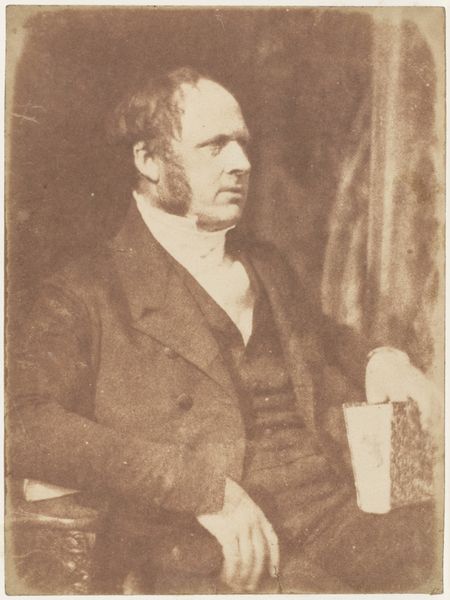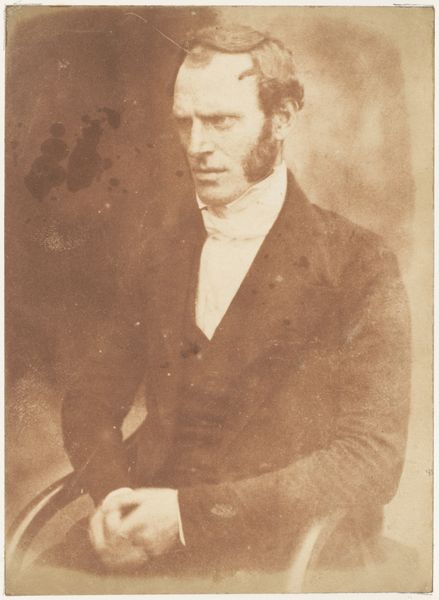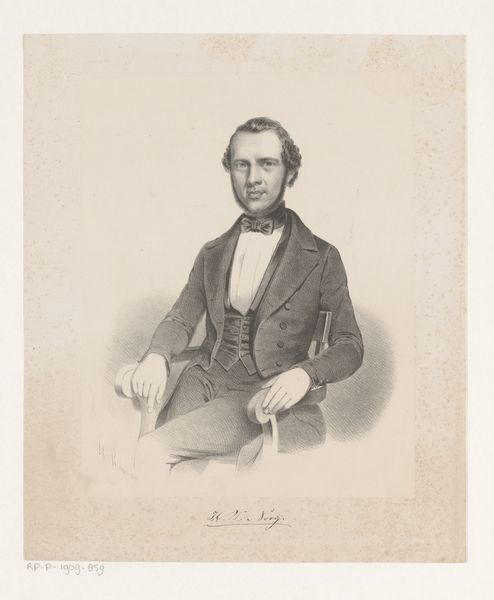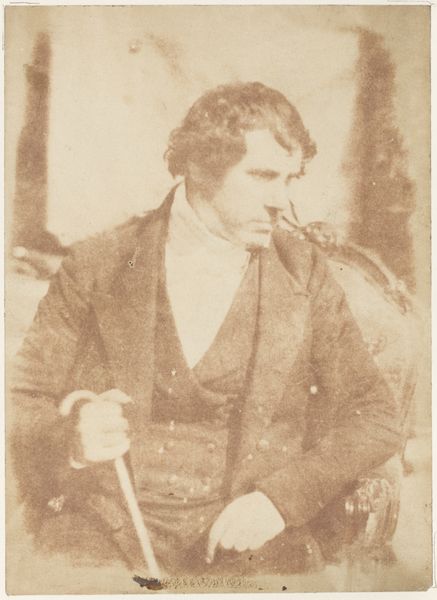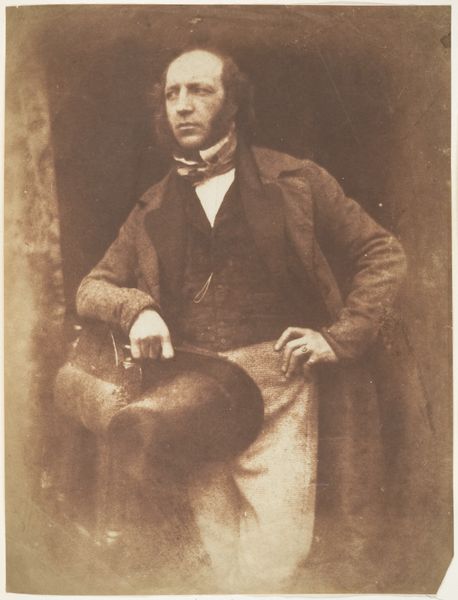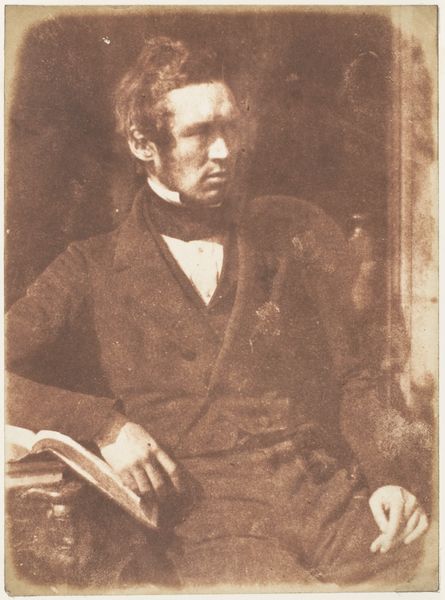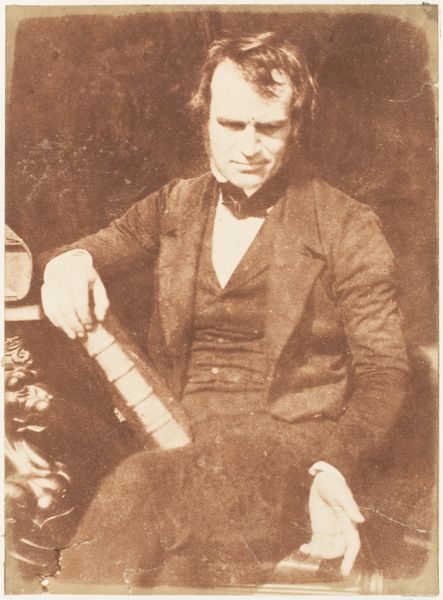
daguerreotype, photography
#
portrait
#
daguerreotype
#
photography
#
historical photography
#
romanticism
#
portrait photography
#
realism
Copyright: Public Domain
Editor: Here we have “Rev. Dr. Andrew Sutherland,” a daguerreotype made between 1843 and 1847 by Hill and Adamson. There's a thoughtfulness to it that really comes across. What strikes you when you look at it? Curator: What immediately grabs me is the context. Photography emerged at a time of enormous social upheaval. Think about the Industrial Revolution, growing class disparities... How does this portrait function within those power dynamics? We see Sutherland, a figure of authority, deliberately presented. But who is seen and who remains unseen in this era of portraiture? Editor: That's fascinating, I hadn’t considered it in light of broader social inequities. The Reverend seems very composed, yet it's also clearly a constructed image. How did Victorian ideas about class and gender impact the image, and those portrayed? Curator: Precisely. And think about Scotland, where this was made, and its own unique colonial relationship with England. Did that shape how the sitter and photographer saw the world, or how they constructed their identities? Who had the privilege to even be photographed, and whose stories were consciously or unconsciously erased? Also notice that while the image looks at realism, there's some level of romanticism in the softness of light and pose of the figure, no? Editor: Absolutely, there’s a strong sense of Romanticism too, softening the sharp edges. How did it affect what and who the photographers chose to show? It’s sobering to consider that so many other people are not recorded, and how the choice to record impacts both art and culture to this day. Curator: Indeed. This single image, like so much of art history, opens a conversation far beyond its surface. And how do we engage these historical threads today, in an effort to create a fairer society? Editor: Definitely given me a lot to think about regarding this daguerreotype and other works we have seen in this collection today! Thanks for broadening my perspective!
Comments
No comments
Be the first to comment and join the conversation on the ultimate creative platform.
